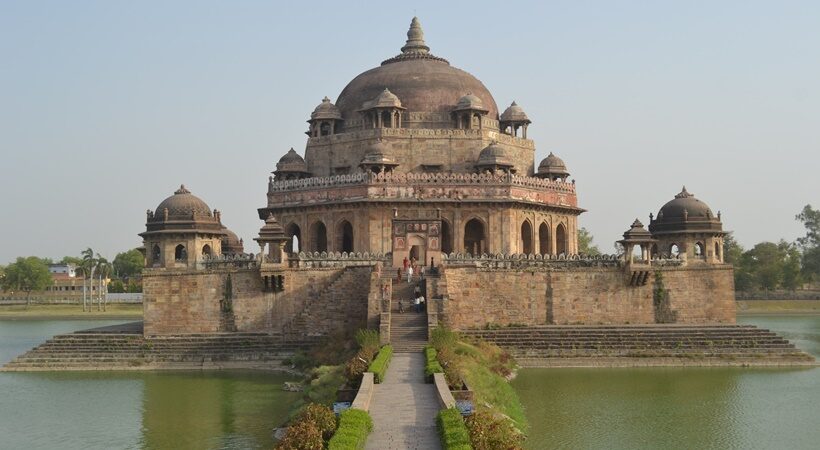The tomb of Sher Shah Suri is a magnificent specimen of Indo-Islamic architecture. Situated in the town Sasaram in Bihar, this mausoleum was constructed to display strength and invoke awe at the first sight. Sasaram served as the capital for the Suri dynasty between 1530 and 1540 before they moved to Delhi for the remaining five years of Suri rule. The tomb was built in memory of Emperor Sher Shah Suri, who defeated the Mughal Empire and founded the Suri Empire in northern India.
Sher Shah’s father and founder of the Suri Dynasty was the Jagirdar of Sasaram and later on the former ascended Delhi’s throne. However, the graves of the Suri Emperors are all situated in Sasaram, perhaps a symbol of their deep connection with the region. Apart from that, all the trusted 24 companions of Sher Shah have been graved at the Mausoleum.
Sher Shah Suri is known as one of the finest rulers of India. During his five-year rule from 1540 to 1545, he set up a new economic and military administration, issued the first Rupiya from “Tanka” and organized the postal system of the Indian Subcontinent. One of the biggest achievements of the emperor was the modernization and rebuilding of the Grand Trunk Road. Sher Shah built the road from Calcutta to Peshawar to facilitate greater commerce and a quick military response. He also linked Agra with Jodhpur.
Apart from this, for the travellers to West and Central Asia, a road was built between, Lahore and Multan. He also linked places like Chittor to the Seaports of Gujarat. Sher Shah Suri ascended the throne of Delhi in 1540. Under his reign, an entire city called Shergarh was built near Delhi on the banks of Yamuna. The city was destroyed after the reconquest of Mughal emperor Humayun. One can see the vestiges of the city at “Purana Qila” in Delhi.
The mausoleum is a perfect example of Indo-Islamic architecture; it was designed by the architect Mir Muhammad Aliwal Khan and built between 1540 and 1545. This red sandstone mausoleum is 122 ft. high and stands in the middle of a beautiful artificial lake. Standing at the centre of the lake on a square stone plinth with domed kiosks, chhatris at each of its corners, the tomb is an architectural marvel.
Also, there are stone banks and stepped moorings on all sides of the plinth, which is connected to the mainland through a wide stone bridge. The main tomb is built on an octagonal plan, topped by a dome, 22-metre in span and surrounded by ornamental domed kiosks, which were once covered in coloured glazed tile work.
The tomb was built during the lifetime of Sher Shah as well as the reign of his son Islam Shah. An inscription dates its completion to August 16, 1545, three months after the death of Sher Shah in a gunpowder explosion during the siege of Kalinjar fort.



















